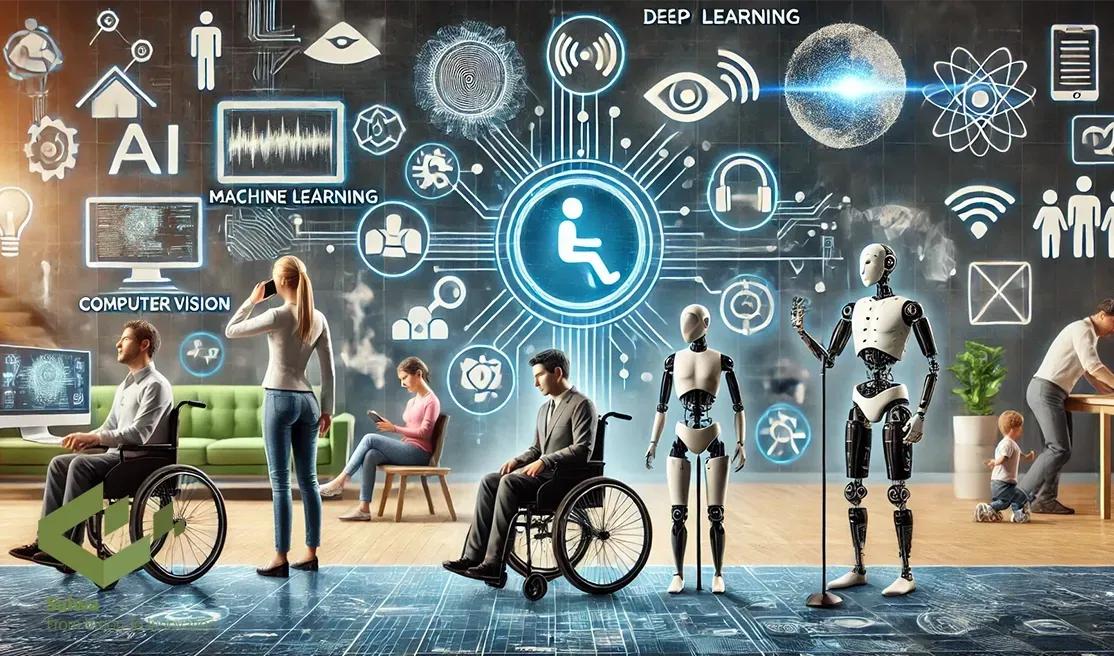How AI Empowers Students with Disabilities: Key Benefits and Innovations
The digital age has sparked a revolution in education, with artificial intelligence (AI) at the forefront of inclusive learning. For students with disabilities,AI technologies break down barriers,foster independence,and unlock new levels of engagement. In this article, we’ll explore how AI empowers students with disabilities, review innovative solutions, and offer guidance for implementing these tools in classrooms and at home.
why Is AI Significant for Students with Disabilities?
More than 1 billion people globally live with some form of disability.For students,learning differences can led to unique challenges in traditional educational environments. AI-driven educational technology adapts material, personalizes learning experiences, and ensures that students of all abilities have equitable opportunities to succeed.
- Accessibility: AI bridges gaps in materials, communication, and physical access.
- Inclusivity: Adaptive technologies promote participation for students with varying needs.
- Empowerment: Customizable and on-demand support gives students more control over their education.
Key Benefits of AI for Students with Disabilities
Leveraging artificial intelligence benefits learners with diverse needs in tangible ways. Here are some primary advantages:
1. Personalized Learning Paths
- AI-powered platforms analyze student progress and customize lesson plans accordingly.
- Lessons adapt in real time, allowing learners to progress at their own pace.
- For students with cognitive or learning disabilities, this minimizes frustration and maximizes engagement.
2. Assistive Communication Technologies
- AI-driven speech-to-text and text-to-speech tools support students with dyslexia, speech impairments, or hearing loss.
- Chatbots and virtual assistants provide instant help for questions and instructions.
3. Enhanced reading and Literacy Support
- Text simplification and summarization tools convert complex information into accessible content.
- Visual recognition software helps students with visual impairments describe and interpret images and texts.
4. Real-time Translations and Captions
- AI automatically generates accurate captions for lectures and videos, aiding deaf and hard-of-hearing students.
- Live translations make multilingual classrooms more accessible for students with language-based disabilities.
5. accessible Learning Materials
- AI converts text into Braille, audio, or large print formats quickly and efficiently.
- Visual and sensory AI apps translate graphics into tactile or descriptive alternatives.
Breakthrough Innovations in AI-Powered Assistive Technologies
The rapid evolution of AI is transforming special education. Some groundbreaking innovations include:
- Reading Assistants: Tools like Microsoft immersive Reader and Kurzweil 3000 offer text-to-speech, language translation, and focus modes for readers with learning differences.
- Voice Recognition & Communication Apps: Platforms such as Google Live Transcribe and Otter.ai convert spoken words to text instantly, benefiting students with hearing impairments or nonverbal disabilities.
- AI-Powered Tutoring systems: Personalized AI tutors, like Socratic by Google or Khan Academy Kids, break concepts down at the student’s pace and level of understanding.
- Visual Assistance with AI: Apps like Seeing AI by Microsoft narrate the world aloud, describing people, objects, and documents to low-vision users.
- Emotion recognition Tools: Facial expression analysis software assists educators in gauging student mood and engagement, particularly helpful for students with autism.
First-Hand Experiences: Making an Impact in Real Classrooms
Numerous case studies underscore the transformative power of AI in special education.Here are a few inspiring examples:
At a public elementary school in boston, students with speech impairments used AI-powered speech recognition tools to participate in class debates. Teachers observed a marked increase in engagement and confidence, as students could articulate thoughts through adaptive devices.
In California, a high school integrated AI math tutors for students with dyscalculia.Adaptive feedback helped students master core concepts at their own pace, improving both mathematical achievement and classroom inclusivity.
A UK university introduced Seeing AI apps campus-wide. Blind and low-vision students reported greater independence, particularly in navigating libraries and accessing printed materials.
Practical Tips for Leveraging AI in Inclusive Education
- Assess Individual Needs: Consult students, parents, and specialists to identify wich AI tools align with specific learning challenges.
- Pilot Multiple Solutions: Experiment with various AI apps before full adoption to ensure a good fit.
- Encourage Self-Advocacy: Teach students how to use AI tools to advocate for their own accommodations and learning styles.
- Foster Collaboration: Involve teachers, aides, and families in ongoing evaluation and optimization of AI-powered supports.
- Stay Informed: AI and assistive technology evolve quickly—stay updated on the latest research, apps, and policy changes.
Addressing Concerns: Privacy, Equity, and Ethics in AI
While artificial intelligence brings immense promise to inclusive classrooms, concerns exist regarding privacy, data security, and equitable access. Educators and policymakers should ensure:
- Safe Data Practices: Choose AI solutions that comply with FERPA, GDPR, or local privacy regulations.
- Universal Access: Invest in technology and connectivity to prevent a digital divide.
- Ongoing Training: Offer professional development so that teachers can use AI tools effectively and ethically.
Ensuring fair AI integration cultivates trust and maximizes its positive impact for all students.
Looking Ahead: The Future of AI and Disability Inclusion
AI-driven assistive technologies are only growing smarter and more intuitive. From brain-computer interfaces to context-aware learning companions,future innovations promise even greater autonomy and engagement for students with disabilities. The continued partnership between educators, technologists, and disability advocates will shape a more inclusive digital classroom for years to come.
Conclusion: Embracing AI for a More Equitable Education
The intersection of AI and accessibility in education is creating a world where no student is left behind. By removing longstanding barriers, AI empowers students with disabilities to fully participate, learn, and thrive academically and socially. As schools and families embrace these breakthroughs, the potential for inclusive education—powered by technology—knows no bounds.
Together, we can harness the power of AI to ensure every learner’s journey is accessible, personalized, and inspiring.

